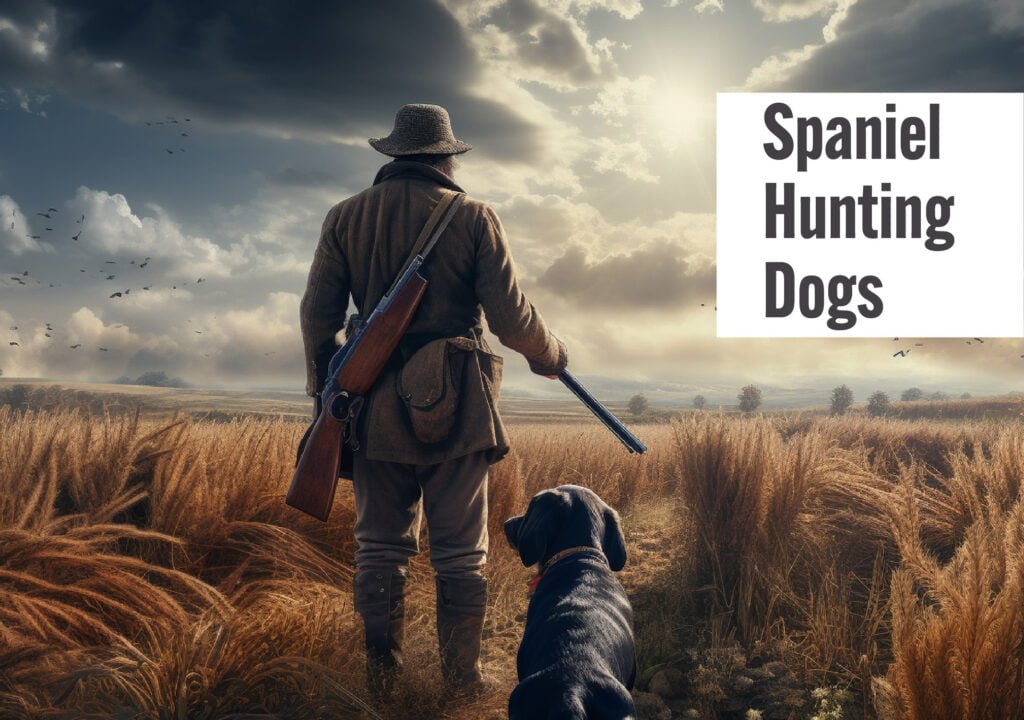An Exhaustive Guide to Spaniel Hunting Dogs: Breeds, Training, and Care

Table of Contents
Table of contents
Introduction
Spaniel hunting dogs, with their outstanding agility, infectious energy, and remarkable sense of smell, have been assisting hunters for centuries. Originally bred for flushing game out of dense vegetation, these versatile canines are just as adept on both land and water. This guide will explore the captivating world of Spaniel hunting dogs, providing insights into different breeds, training techniques, and crucial care tips.
Unraveling the Enigma of Spaniels as Hunting Companions
Used as hunting companions for centuries, Spaniels are incredibly versatile, known for their robustness, agility, and exceptional sniffing abilities. They excel in a wide range of environments, making them invaluable to many hunters.
Spaniels: The Perfect Hunting Companions
Traditionally, Spaniels were used to “spring” game out of hiding for nets, falcons, or greyhounds, hence the name “springer.” In modern hunting scenarios, they are usually employed to find and flush game for hunters, demonstrating their adaptability.
The Unique Characteristics of Spaniels
Spaniels are medium-sized dogs with distinguishing physical traits such as floppy ears, long and wavy fur, and ever-wagging tails. They are renowned for their hardiness, intelligence, and their exceptional olfactory senses, which make them an asset in any hunting expedition.
A Look at the Popular Spaniel Breeds in Hunting
There are numerous Spaniel breeds that are popular among hunters, each having its unique traits, abilities, and hunting style.
English Springer Spaniels: The Energetic Hunters
English Springer Spaniels are a perfect blend of energy, intelligence, and eagerness to please. They’re celebrated for their ability to flush birds out of their hiding spots rapidly and efficiently.
Cocker Spaniels: Small but Tenacious
Both American and English Cocker Spaniels are smaller than Springer Spaniels. Despite their size, they’re incredibly tenacious, showcasing remarkable retrieving abilities that make them valuable assets to any hunting party.
Boykin Spaniels: The Water-loving Retrievers
Boykin Spaniels are especially popular among waterfowl hunters. Their love for water, coupled with their excellent retrieving abilities, make them ideal hunting dogs in wetlands and water bodies.
Training Spaniels for Hunting: A Step-by-Step Guide
Training a Spaniel for hunting can be a gratifying endeavor. It demands consistency, patience, and a deep understanding of the breed’s innate hunting instincts.
Early Training: The Building Blocks
Starting your Spaniel’s training early, when they’re a puppy, sets a firm foundation. Begin with basic obedience commands and then gradually introduce them to the hunting environment.
Field Training: Refining the Skills
Field training begins with simple fetch exercises and slowly progresses to more advanced drills like quartering, where the dog learns to scan a field in a systematic manner, and flushing, where the dog learns to drive game from cover.
Water Training: Creating a Waterfowl Hunter
Most Spaniels are natural swimmers. By introducing your dog to water gradually and positively, you can foster this innate skill and develop a talented waterfowl hunter.
A Guide to the Proper Care and Maintenance of Your Hunting Spaniel
To ensure your Spaniel performs optimally during hunting expeditions, you must maintain their overall health and wellbeing.
Regular Exercise: For Health and Happiness
Being high-energy breeds, Spaniels require regular and rigorous exercise. Regular physical activity keeps them fit, healthy, and mentally stimulated, even during the hunting off-season.
A Balanced Diet: Fuel for the Field
A well-balanced diet is paramount for keeping your Spaniel healthy. Their dietary requirements can change based on their age, size, and the level of physical activity they engage in daily.
Regular Grooming: A Clean Spaniel is a Happy Spaniel
Spaniels need regular grooming due to their long, silky fur. Regular brushing can help prevent matting and tangling, keeping your Spaniel looking their best.
Conclusion
Spaniels are not only adept hunting companions but also excellent family pets. Their boundless energy, agility, and formidable scenting abilities make them a joy to work with in the field. Whether you’re an experienced hunter or just starting, a Spaniel by your side can significantly enrich your hunting experience.
Frequently Asked Questions
1. Are Spaniels suitable for novice hunters?
Ans. Absolutely. Spaniels are intelligent, adaptable, and eager to please, making them excellent for novice hunters. Their natural hunting instincts make training a smooth process.
2. How do Spaniels fare in different weather conditions?
Ans. Spaniels are quite hardy and can typically hunt in various weather conditions. However, extreme cold or heat can be harmful, so it’s crucial to monitor your dog’s comfort and health during hunts in harsh conditions.
3. What is the average training duration for a Spaniel hunting dog?
Ans. The duration of training can vary significantly based on the individual dog and the trainer’s experience. However, basic hunting training typically starts when the dog is about six months old and can continue for several months to a year.
4. Do Spaniels blend well into family environments?
Ans. Definitely! Spaniels are known for their friendly, gentle nature. They interact well with children, making them excellent family pets alongside being accomplished hunting dogs.
5. What is the average lifespan of Spaniels?
Ans. Spaniels typically live between 10 to 15 years, depending on the breed. Regular veterinary check-ups and a healthy lifestyle can contribute to a longer, healthier life.







